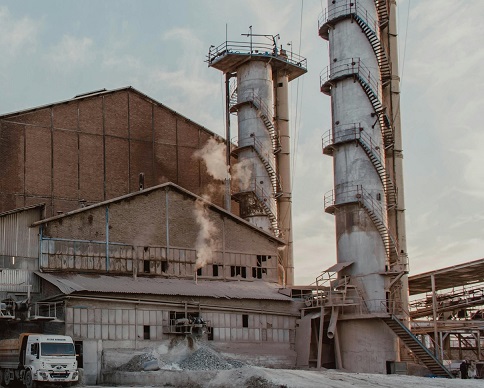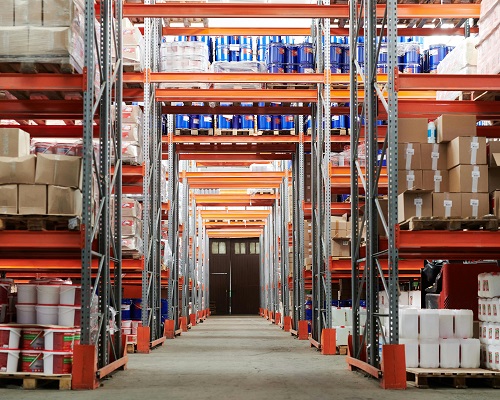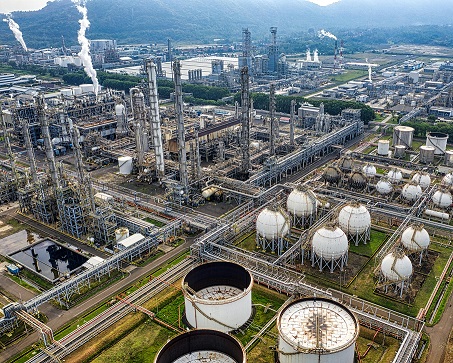Useful Information for Pumping Chemicals
Selecting a compatible pump
When choosing a pump for a particular chemical process, it is important to consider the following factors:
What are the properties of the feedstock?
Is the feed a mixture of chemicals? What are the properties of the chemicals and their concentration? What is the pH? Are there any impurities, suspended solids, gases or additives? Do the properties or compositions change with time? Although the individual chemicals in a mixture may be compatible with a chosen pump and its construction materials, the combination may produce unexpected behaviour. It is important to seek advice from specialists when handling chemical mixtures.
What are the operational requirements?
What are the ranges of temperature and pressure? Is the process continuous or intermittent? What flow rates are required? The properties of a chemical are affected by concentration, temperature and pressure. A pump may be resistant to a chemical and able to operate successfully at ambient temperature but be prone to damage or loss of efficiency under process conditions. Changes in viscosity and shear sensitivity may demand compromises in operating parameters.
Are there safety considerations?
A toxic, hazardous or flammable chemical must be safely contained by the pump and associated equipment. Any leakages or spills could be dangerous for both workers and the environment. Particular attention must be given to the pump’s sealing system and, in many cases, magnetic drives are employed. If the pump is to be operated in an ATEX-controlled area the pump needs to be ATEX certified.
Is the chemical corrosive?
How will the chemical interact with the pump’s wetted parts? Reactions between the chemical and exposed materials (including seals and shaft components) result in impaired performance and increased maintenance costs. In extreme cases, corrosion can cause the premature failure of pumping equipment. All manufacturers carry out extensive tests to ensure the suitability of their systems and offer chemical compatibility charts for their product ranges.
Could contamination be an issue?
In addition to any potential damage to the pump, specialized materials and coatings may be necessary to avoid contamination or degradation of the feedstock resulting from leeching of material from, or adverse reactions with, pump components. This can be particularly important in pharmaceutical and food or beverage applications.
Is the chemical abrasive?
Abrasive chemicals can cause wear to pump components and over time can cause failures and leakages. Pumps specifically designed for these chemicals, for example, with ceramic coatings, are available.
Material selection for pump casings
Pumps are often available in a range of construction materials:
- Cast iron or carbon steel - Cost-effective and relatively easy to manufacture. When used in applications with water or aqueous solutions with pH values between 6 and 10, cast iron, which contains about 4% carbon, quickly acquires a protective graphite layer. In fact, poorer quality cast iron with a higher carbon content is more resistant to corrosion than steel. Cast iron is the standard construction option for moving industrial oils and non-corrosive media.
- Aluminium - Cheap but rarely used in pumps for chemical processes. Aluminium is susceptible to corrosion in water and in acidic or alkaline media. In some processes, it is possible to dose inhibitors into the feed to maintain a protective coating on aluminium components. The FTI-AIR FT10A is an air-operated double diaphragm pump available with aluminium wetted parts. Other models in the range are available in stainless steel, polypropylene or PVDF. These pumps are available with a wide range of diaphragm material options.
- Stainless steel - Stainless steel offers good corrosion resistance to alkalis, some acids and dry solvents. It contains a significant proportion of chromium (at least 15%) and sometimes other elements such as nickel, manganese and molybdenum. These elements form a thin, inert oxide layer that binds strongly to the surface and protects the underlying metal in environments that would be highly corrosive for cast iron or steel. Under the right conditions, the protective oxide layer is self-repairing if it is scratched or damaged.
- There are four main types of stainless steel based on their crystal structures: austenitic, ferritic, martensitic and duplex. The most common types of stainless steel used in pump manufacture are the 300 series in the austenitic family, particularly 304 and 316. The 304 grade contains 18% chromium and 8-10% nickel. The 316 grade also includes 2% molybdenum and has greater resistance to acids and to localized corrosion. There are variants of the 316 stainless steel, including a higher alloyed variant 1.4435, which is used as a medical grade due to its excellent resistance to corrosion. 1.4435 is the standard construction material for SAWA Pumps.
- Nickel alloys - Available in a range of compositions (often under the trademarks Inconel and Hastelloy), these are resistant to corrosion from a wide range of chemicals including acids and alkalis. Nickel alloys are also strong, resistant to galling, and can withstand high temperatures and pressures. They are commonly used in the manufacture of the moving parts of gear pumps and circumferential piston pumps but can also be used for casings. However, nickel alloys are expensive. Alloy-C or Hastelloy construction pumps are available from Liquiflo, HNPM, Dickow, Wanner and Sawa.
- Thermoplastics - A common thermoplastic used in pumps is PTFE, this is a polymer that is resistant to most of the chemicals that corrode metals. Thermoplastics are characterised by an ability to be softened by heating and cast into complex shapes. It is therefore possible to mould individual components or even an entire pump case. Polypropylene construction is typically offered for handling alkalis and weak acids, and PVDF is available to handle strong acids. Mechanical strength can be reinforced with fillers such as glass fibre. However, physical properties are inferior to those of equivalent metal pumps. Finish Thompson offers a wide range of non-metallic pump options used for handling a vast range of acids, alkalis and other chemicals.
- Lined iron or steel - A good compromise for dealing with corrosive chemicals is to line the wetted parts of iron or stainless steel casings with an inert thermoplastic such as PFA or ETFE or a ceramic coating. An example of a lined gear pump is the Liquiflo Polyguard (a PFA-lined 304 stainless steel gear pump), and for a lined centrifugal pump; the Finish Thompson UC-Series (ETFE-lined ductile iron centrifugal pump).
Material selection for seals
Pumps contain two types of seal: shaft seals and stationary seals.
Shaft seals
Shaft seals prevent liquid escaping from a rotating or reciprocating shaft. Often several sealing options will be available: packings, lip seals, and all types of mechanical seals – single, double and tandem including cartridge seals. Packing usually consists of inert materials such as expanded PTFE, compressed graphite, and granulated elastomers. Lip seals are circular elastomeric elements which are held in place against the drive shaft by a rigid outer housing. They are not suitable for use with any abrasive liquids or fluids containing solids. Mechanical seals consist of one or more pairs of optically flat, highly polished metal faces connected to the drive shaft. The faces require lubrication, either by the pumped liquid itself or by a barrier fluid. They can handle a wide range of liquids, viscosities, pressures, and temperatures.
Stationary seals
Stationary seals connect pump components but do not have to seal around any moving parts. They include O-rings, gaskets, and diaphragms. These are often made from elastomers (synthetic rubbers). These can be manufactured to have specific physical and chemical properties by the addition of fillers and other compounds and through special vulcanisation processes. Compounds are generally known by the tradenames of their manufacturers.
Sealless pumps
In applications involving the pumping of extremely hazardous fluids in which no leakage can be tolerated, so-called ‘sealless’ pumping systems, using magnetic drives, are recommended. Although such systems do not feature a shaft seal, some form of stationary seal is always necessary and its chemical compatibility with the pumped fluid needs to be considered.
Table 1. Elastomers and thermoplastics used for gasket, O-ring and diaphragm manufacture. Note – the temperature ranges stated are guides only and will vary across grades of elastomer, and for each pump application.
| Material | Tradename | Advantages/Disadvantages | Typical operating temperature range |
| Nitrile rubber (NBR) | Buna N® | Low cost. Resistant to oil. Deteriorates when exposed to air and sunlight. | -40 °C to 100°C |
| Butyl rubber (IIR) | Exxon Butyl®, Polysar Butyl®, Esso Butyl® | Resistant to dilute acids and alkalis. Not suitable for use in mineral or petroleum based fluids. | -50 °C to 100°C |
| Epichlorohydrin (CO, ECO) | Hydrin® | Resistant to acids and alkalis. Poor compression properties; corrosive effect on metals. | -35 °C to 125°C |
| Polyacrylate rubber (ACM) | HyTemp Acralen | Good resistance to hot oil; poor resistance to water, acids and alkalis. | -10 °C to 120°C |
| Chloroprene rubber | Neoprene, CR | Good chemical resistance and mechanical properties over a wide temperature range. Not suitable for aromatic or chlorinated hydrocarbons. | -40°C to 120°C |
| Styrene butadiene rubber (SBR) | Buna S® Perbunan® | Not resistant to oil or fuel. | -25°C to 100°C |
| Ethylene propylene diene rubber (EPDM) | Dutral® Vistalon® | Not suitable for petroleum-based fluids and di-ester lubricants. Suitable for polar fluids. | -50 °C to 130°C |
| Hydrogenated nitrile rubber (HNBR) | Better oil and chemical resistance than nitrile rubber (NBR), not suitable for aromatic oils and polar organic solvents. | -40 °C to 150°C | |
| Fluorosilicone rubber (FVQM) | Resistant to di-ester lubricants, not suitable for use with phosphate esters. | -60 °C to 200°C | |
| Silicone rubber (VMQ) | Good for food/pharmaceutical applications. Not suitable for use with superheated steam or petroleum fluids. | -60 °C to 200°C | |
| Fluoroelastomer (FKM) | Viton® Fluorel® | Resistant to oils and most chemicals. | -10 °C to 180°C |
| Perfluorinated elastomer (FFKM) | Kalrez® Chemraz® | Excellent chemical resistance. Expensive. | -10 °C to 250°C |
| PTFE | Teflon® | Resistant to all chemicals, low coefficient of friction, requires no lubrication. Not elastic – cannot be resealed. | -180 °C to 230°C |
‘Difficult’ chemicals
Many chemicals require careful treatment because of their particular characteristics. You can find many case studies and application notes here. A few examples are discussed below:
Isocyanates
Isocyanates are used in the manufacture of polyurethane foams, industrial coatings, elastomers, inks, and resins and will “set” in the presence of moisture. Air-tight seals are therefore important with sealless, magnetic drives preferred. The following pumps have been used for isocyanate processes:
Hydrogen peroxide
Hydrogen peroxide is a volatile chemical prone to ‘gassing off’ in the presence of contaminants such as iron. It can also react explosively with mineral oils if they were to leak from the hydraulic side of the pump. Suitable wetted parts include 316 stainless steel or ETFE/PTFE linings. The following pumps have been supplied successfully for hydrogen peroxide applications:
Ammonia
Ammonia is used as the refrigerant in cooling systems. It is a toxic gas at ambient temperature and pressure. Any leak poses a health risk. For processing, ammonia is kept at elevated pressure to keep it in liquid form. It is important to maintain pressure throughout the system to stop the ammonia from flashing and to avoid cavitation. It is a ‘thin’ liquid (low viscosity) requiring a sealless pumping solution. Solutions may be found from Wanner Hydra-Cell, Dickow Side-Channel or Sawa.
Shear-sensitive liquids
Many liquids, particularly foodstuffs, are shear-sensitive. These undergo changes in viscosity with stirring or pumping. Shear sensitive fluids may require agitation to achieve the ideal viscosity for transfer or dosing. Others can be temporarily changed or even permanently damaged by shear action. Pumps with both a slow, gentle pumping action and with large spaces between the internal moving parts are preferred. Wanner’s Hydra-Cell range of diaphragm pumps, Viking’s range of hygienic circumferential piston pumps, and Bornemann’s range of hygienic twin screw pumps have proven low shear actions.
Further advice
Please contact us for advice regarding pump selection for any difficult application. We have extensive experience of pumping many hard-to-handle liquids including:
- Acids
- Bases
- Organic liquids
- Solvents
- Inorganic liquids
- Slurries
- Volatile liquids
- Corrosives
- Abrasive liquids
- Non-lubricating liquids
- Liquids with entrained gases
- Flammable liquids




